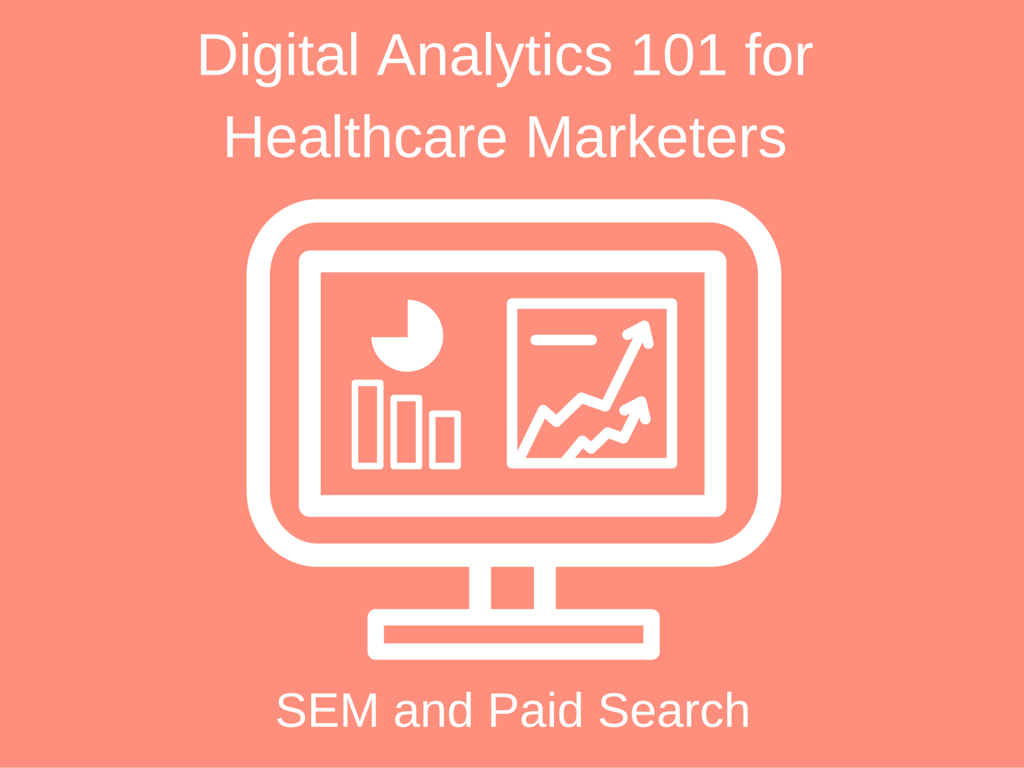
This post is part of our series, Digital Analytics 101 for Healthcare Marketers, where we’ll provide short briefs on the Whats, Whys, and Hows of digital strategy. In this article, we’ll explore how SEM and Paid Search bring measurability, and affordability to digital marketing.

This post is part of our series, Digital Analytics 101 for Healthcare Marketers, where we’ll provide short briefs on the Whats, Whys, and Hows of digital strategy. In this article, we’ll explore how SEM and Paid Search bring measurability, and affordability to digital marketing.
Across the globe, digital tools are transforming how marketers approach their audiences. But despite this overwhelming consensus, the healthcare industry is often slow to adopt new marketing techniques. As a result, many healthcare professionals are still asking a question that most of us presumed answered a long time ago: “Why digital?”
The reality is that this change in healthcare, as in all industries, is a necessity — the internet is now the primary way that consumers engage with healthcare companies. As John Weston, CMO at Mayo Clinic, explained in a recent AdAge article, “The consumer-to-patient journey is largely a digital journey at their moment of need.” Indeed, at least 72% of Americans look online for health information each year, according to Pew Internet, and that includes medical professionals.
“If I were diagnosed with something tomorrow, one of the first things I would do is go online,” Weston added.
Given how wide this market has become, healthcare marketers must adapt their strategies to better capture and hold the attention of online audiences. But any digital marketing strategy is only as strong as its foundation, which begs the question: where’s the best place to start?
Understanding the Healthcare Consumer Journey
According to the same Pew study, 77% of online healthcare shoppers begin their consumer journey with a search engine. Significantly, Google has found that the number of patients driven to visit hospitals, clinics, and other medical practices by search is as many as three times the number of visitors who find the location by other means.
Fortunately, adopting a search strategy is simple and affordable, bolstering positive brand perception and increasing visibility. It also provides a host of metrics to help you refine your strategy and boost its overall value. Here’s what you need to know about Search Engine Marketing (SEM):
SEM and Google AdWords
At the heart of any solid digital campaign is SEM and pay-per-click (PPC) advertising. It sounds complicated, but in practice, it’s actually pretty simple: marketers can choose strategic keywords and attach them to ads for specific content, product, or services pages.
If a user conducts a Google search that matches the specified keyword, a highly-targeted, paid ad will appear alongside that user’s organic search results. When users click on one of these ads, the sponsor of the ad is charged a fee — hence, pay-per-click.
There are numerous benefits of SEM, as Spark emphasizes, some of which include:
- Measurability: SEM allows marketers to track a wide range of consumer data, making it easier to identify what’s working (and what’s not) in order to maximize ROI.
- Targeting: You can make sure your ads appear only for customers with certain characteristics, including those within a specific geographic location (large, small, or searched-for), those using mobile, those online during a certain time of day, and those who speak a certain language.
- Democratic Search: This principle basically states that a rising tide lifts all boats — or rather, that rising traffic lifts all ads. Even if your ad spend is low, your ad will still receive high search rankings if the content on your landing page is relevant and high quality.
- Flexibility: One of the biggest benefits of digital marketing is that it allows you to adjust your messaging on the fly — in other words, you can optimize and adapt your strategies while their live in the market, which can’t be done on traditional marketing channels such as TV, radio, and print. “Real-time” optimization saves a great deal of budget and is one of the primary reasons that digital is proving to be one of the most efficient channels for healthcare marketers to connect with patients.
Bringing Your Audience to You
The best part about PPC and SEM techniques is that their rewards tend to grow over time — the more click-throughs and content you make available, the higher Google will rank your paid ads and web pages. Moreover, inserting your messages directly into your target demographic encourages word-of-mouth discussion among patient communities and popular forums.
Most significantly, SEM places your branded content directly in front of the consumer at precisely the moment that they’re actively seeking treatment. This not only narrows your focus to the most relevant patients, it also helps you speak to their direct needs. If anything, healthcare consumers today are seeking personalized, proactive care — and SEM helps you advertise it in a personalized, proactive way.